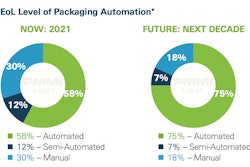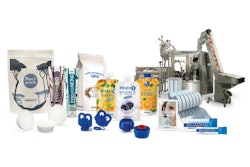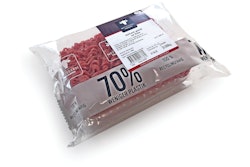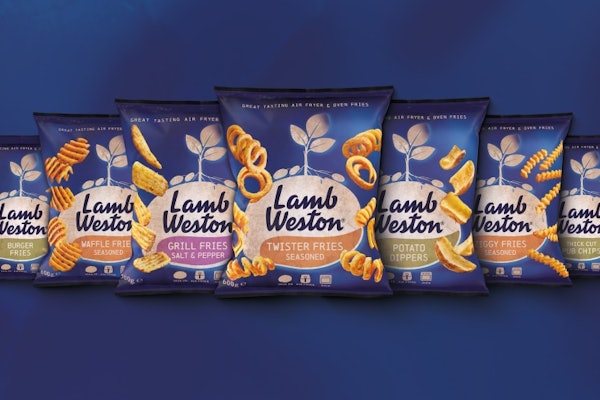Packaging World:
What’s the big-picture view of product freshness and the role played by package seal integrity?
Mark Green:
Every manufacturer of food product faces the challenge of maintaining stability or “freshness” throughout the shelf life of their product. Significant investments are made in product and process design to maximize this time including producing and maintaining hermetically sealed containers. A failure to achieve package integrity typically results in spoilage and/or reduced product performance over time. For highly sensitive products, the manufacturer is faced with a potential product recall, reduction in brand equity, and lost consumer confidence.
Why not just design quality in, so that there is no need for testing?
I have long been a proponent of designing quality in as opposed to testing it out. The objective is to develop a combination of package components and closing/sealing processes to produce consistently robust packages. Having personally participated in development and validation of multiple types of these package systems, I can attest to countless hours of producing and testing samples to achieve the optimal design. Despite our best efforts in specification development and standard operating procedures, invariably at some point packages will be produced with compromised seals.
Is there any single biggest challenge facing food manufacturers in this area?
The biggest challenge we face in manufacturing is to detect the seal failures in “real time” to allow production to stop and correct the cause before producing a warehouse full of suspect product, or worse, releasing the product for distribution. Obviously, for this to be possible, the leak detection method must be non-destructive. Multiple non-destructive approaches to 100% on-line leak testing exist, but their effectiveness is limited depending on the line speed and cycle time for the leak testing. For example, a line producing 30 units/min could test 100% of production if the test cycle time is two seconds or less. Doubling the line speed to 60 units/min will cut the test cycle to 1 second or less and so on. With all types of leak testing available there is an inverse relationship between cycle time and size of leak that can be detected. Highly sensitive products generally require testing down to the equivalent of at least a 20-micron hole. The fastest known cycle time available today for this limit of detectability is five seconds. It is possible to install multiple testing units and split the production stream across them, but this is costly and requires a larger footprint.
Presumably there are times when 100% testing is not practical, yes?
Yes, and when that’s the case, a food manufacturer must still be able to develop an effective quality control program for seal integrity. Most manufacturing projects I have worked on ran at line speeds exceeding 200 units per minute, requiring us to utilize a less than 100% testing approach. Generally, the strategy is to test key package quality attributes and leak test from a statistically significant sample of the product stream. Since the package and process variables are unlikely to vary greatly over the relatively short intervals between tests, this strategy has been shown to be effective in minimizing leak integrity issues.
Is there a single best way to proceed when it comes to monitoring package integrity?
The most economical and effective solution is to implement a hybrid approach addressing the packaging components, process, and seal integrity. First, the packaging components must be produced and verified to comply with the specifications verified during the package validation process. A comprehensive quality assurance program to inspect incoming lots of materials should be sufficient to accomplish this.
Second, the process for closing/sealing the package must be verified through continuous monitoring or periodic sampling. On-line continuous process monitoring solutions are available from multiple suppliers for most processes and can usually be justified using labor savings when compared to manual testing, plus they provide immediate feedback when the process is drifting or has exceeded a specified limit. Third, the package seal integrity should be verified using a leak detection method. Depending on the application it may be feasible to utilize two levels of leak detection, gross and micro. Generally speaking, a gross leak detection system will identify near total failures of the seal system. The most prominent application is foil seals on flexible or semi-rigid containers where squeezing the container will cause the foil to distend. A gross leak detection system will measure the distention, typically at full line speed, and reject the container if it fails pre-determined limits.
What about micro leak detection?
The traditional approaches to micro leak testing are bubble testing using a water bath or dye penetration testing, both of which are time-consuming manual destructive tests. Depending on the acceptable quality level selected for the quality control method, the product costs for these methods could easily justify utilizing a non-destructive approach. For example, one of the manufacturing lines we installed required bubble leak testing five containers every 20 minutes. For our 22-hour x six-day work week we tested 99,000 containers over our 50 week work year at a product cost of almost $2.5 million for our $25 product. It wasn’t difficult to justify a non-destructive approach. I’ve experimented with a few of the popular non-destructive methods and determined the most reliable and easiest to implement was one that measures a change in applied vacuum over time, known in the industry as vacuum decay. The better systems will utilize highly sensitive pressure sensors and advanced algorithms to detect non-tortuous path leaks to an equivalent hole size as small as five microns. Typically the system supplier will produce a test chamber fitted to your container to isolate the seal area for testing to minimize cycle time. Depending on need, the unit may be supplied with multiple chambers to allow testing several containers simultaneously. It is also possible to install automatic sampling equipment on the line which will place product in the test unit and return it to the product flow post-testing. This is especially useful for lines with minimal staffing and/or in higher cost labor markets.
Any closing thoughts?
I learned the lesson of seal integrity the hard way. When launching a new package where some of the materials were difficult to control manufacturing consistency, the quality control in-process checks were inadequate to predict seal integrity. At that time, leak testing was done at the beginning, middle, and end of the batch which was typically a shift. It wasn’t until three days of production were completed that random sampling from pallets in the warehouse revealed leaking containers exceeding the acceptable quality level. The entire three days of production was put on hold and eventually destroyed. This was a very costly learning lesson for all parties involved and one that still resonates with me today. Whenever product integrity relies on producing and maintaining a hermetically sealed container, I always take the necessary steps to assure success.
























